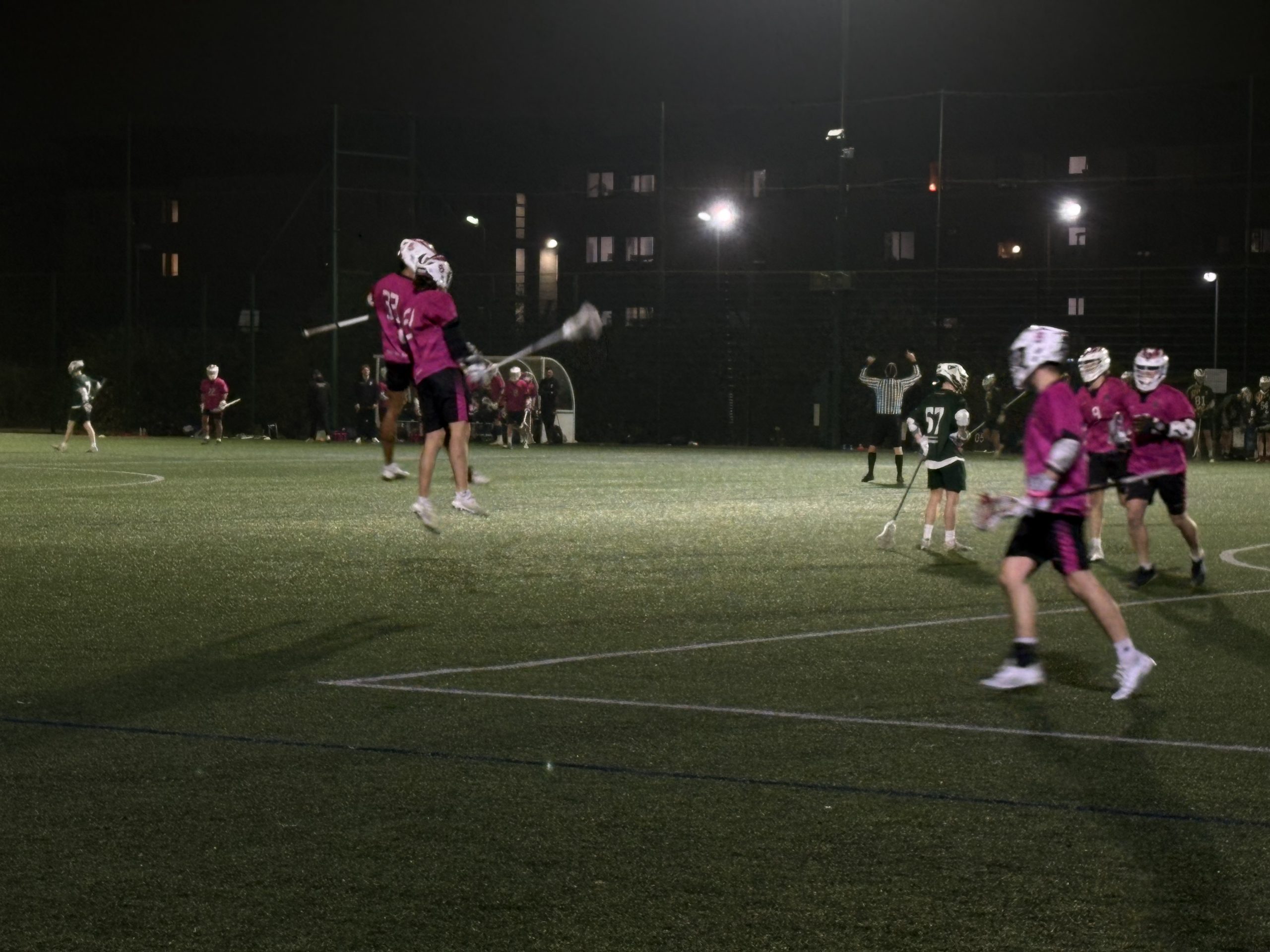I am an avid sports fan. I have played my fair share too, from football to hockey to cricket to fencing.
And I know enough about most popular sports to get by in conversation – even many niche ones.
Sports are my passion but lacrosse has always stumped me.
I never really cared for it, perhaps due to its relative unpopularity in the UK, or its mostly American player-base.
But one of my (American) course mates plays lacrosse for Nottingham Trent University, so I went to watch him play against my alum, the University of Nottingham.
Lacrosse is a slow, deliberate, tactical game, yet it contains enough player-on-player violence to keep the viewer hooked.
Men’s lacrosse teams play with biker-style helmets, elbow pads and gloves, and are constantly whacking each other with their sticks.

(Credit: Freddie Heynes)
The physicality is entertaining, but the tactical brilliance was also hugely enjoyable to watch.
I know nothing about lacrosse tactics, but I was still mostly able to follow what was happening in the game, aided from time to time by a friendly group of lacrosse players next to me who were willing to answer any questions I asked them.
The basic premise is simple, get the ball in the other team’s goal.
This is done by progressing the ball up the field, often with short, sharp passes from player to player, before creating space for a player to take a shot.
The players were taking shots from a range of distances, with a few particularly memorable goals being rifled in from players standing perhaps fifteen yards away from the goal.
Being a lacrosse goalkeeper seems a thankless task.
The ball is small but made of very tough rubber, and they wear next to no padding.
The sticks they use have a much larger net than the outfielders, but this seems to have little benefit.
The goal is not big by any stretch, but still requires a lot of agility to cover.
My knowledge of other American sports helped me to understand what was going on.
Like American Football, there are defensive and offensive units within a lacrosse team, but like netball, the players are limited to where they can go.
When I realised this, the structure of the game became much clearer to me.
It felt like basketball, with slow tactical build-up followed by a final burst of energy in order to get the ball in the back of the net.
The umpires were dressed as a child may imagine them, with black and white striped jerseys, knee high socks and a small cap.
When a foul occurred, the umpires throw a yellow flag in the air, before signalling what the foul is and what the repercussions are.
Sin-bin penalties, like ice hockey, were enforced throughout the game, adding to the suspense.
The game started slowly, with neither team scoring in the first quarter.
Then, NTU took a 3-0 lead by half-time, and there was no looking back.
Trent would go on to dominate the game, ending in a 11-3 victory to the boys in pink.
It was a great experience. I’d love to watch another game, and I feel as if I learnt a lot.
I’d recommend it to anyone unsure on the sport, as the physical contest makes it incredibly enjoyable to watch.

